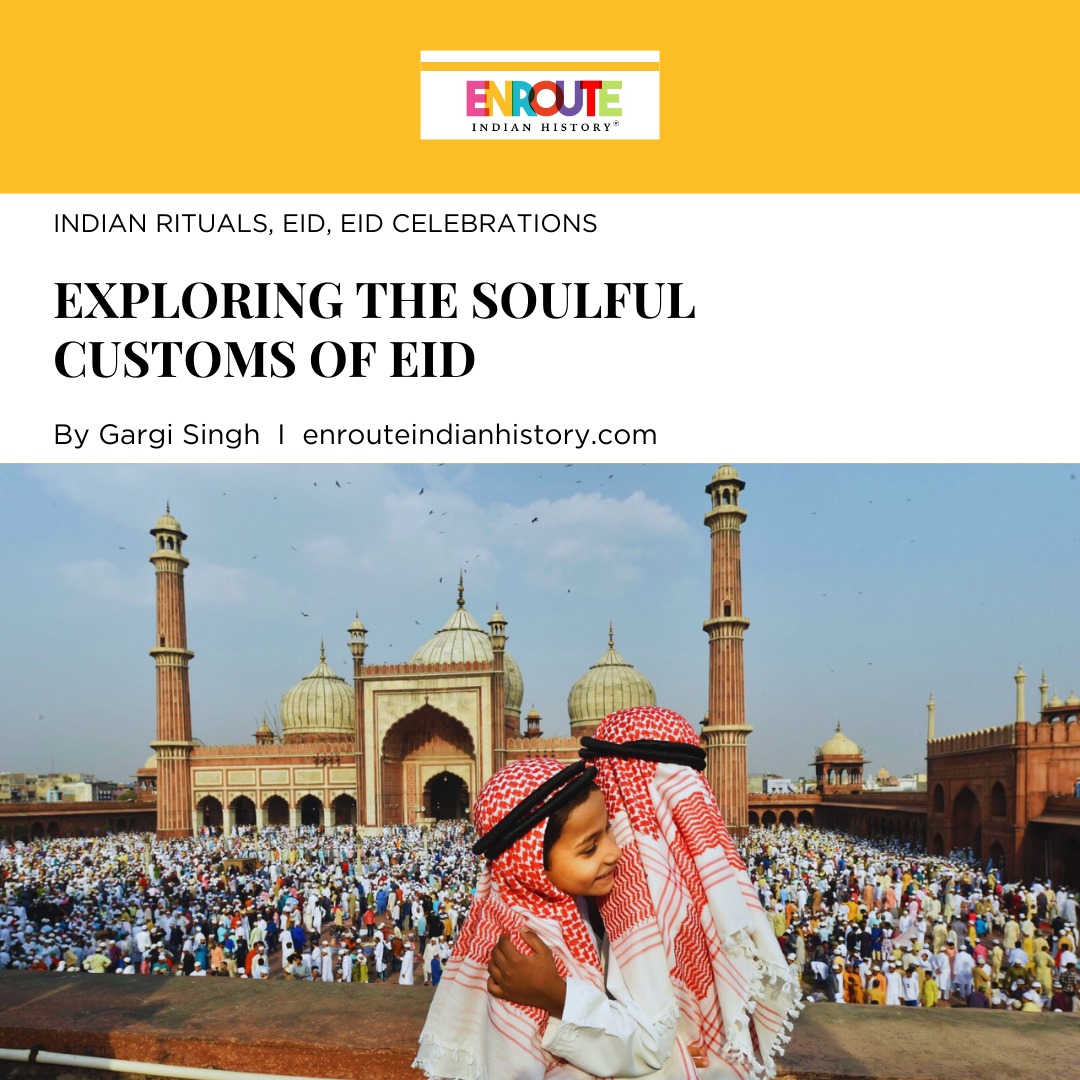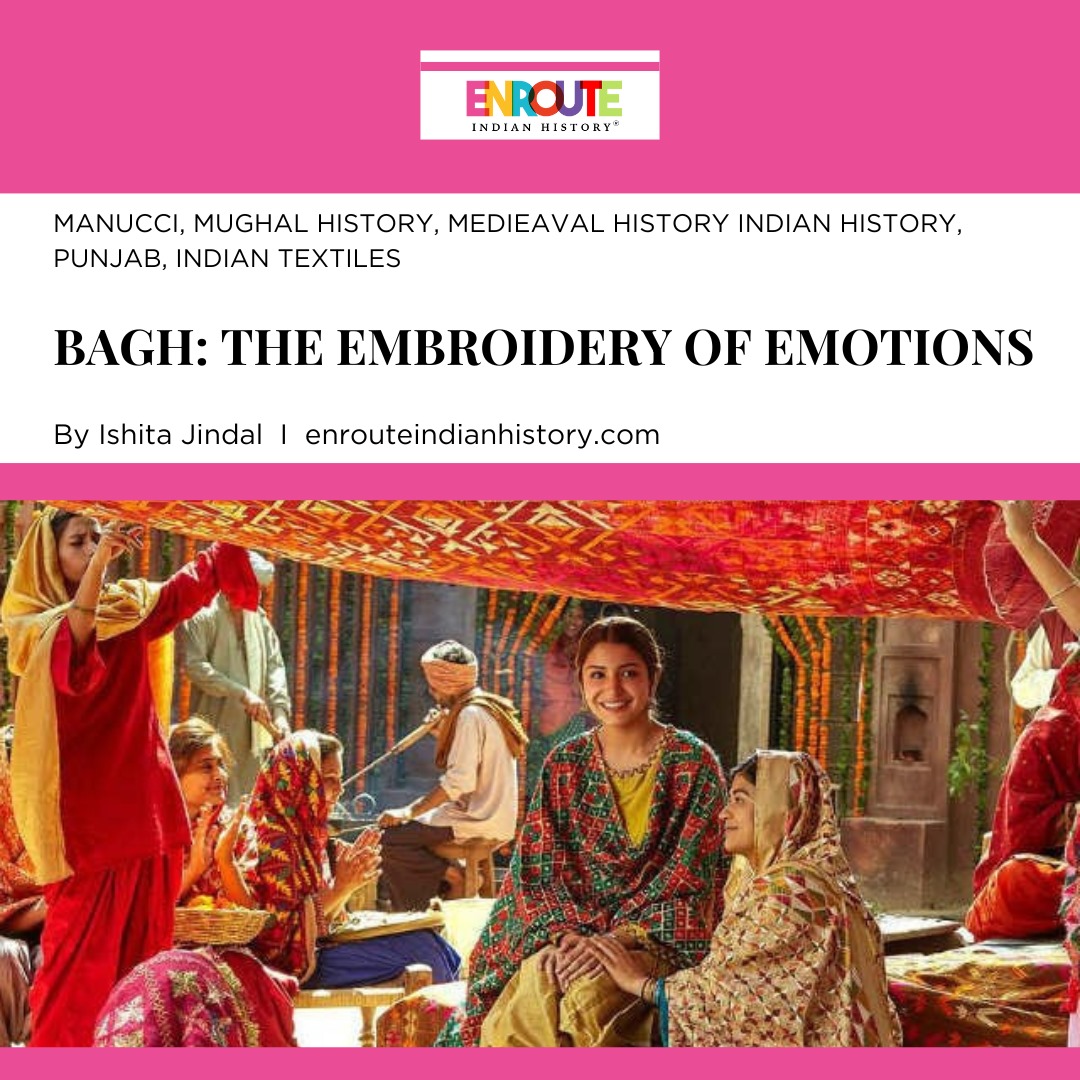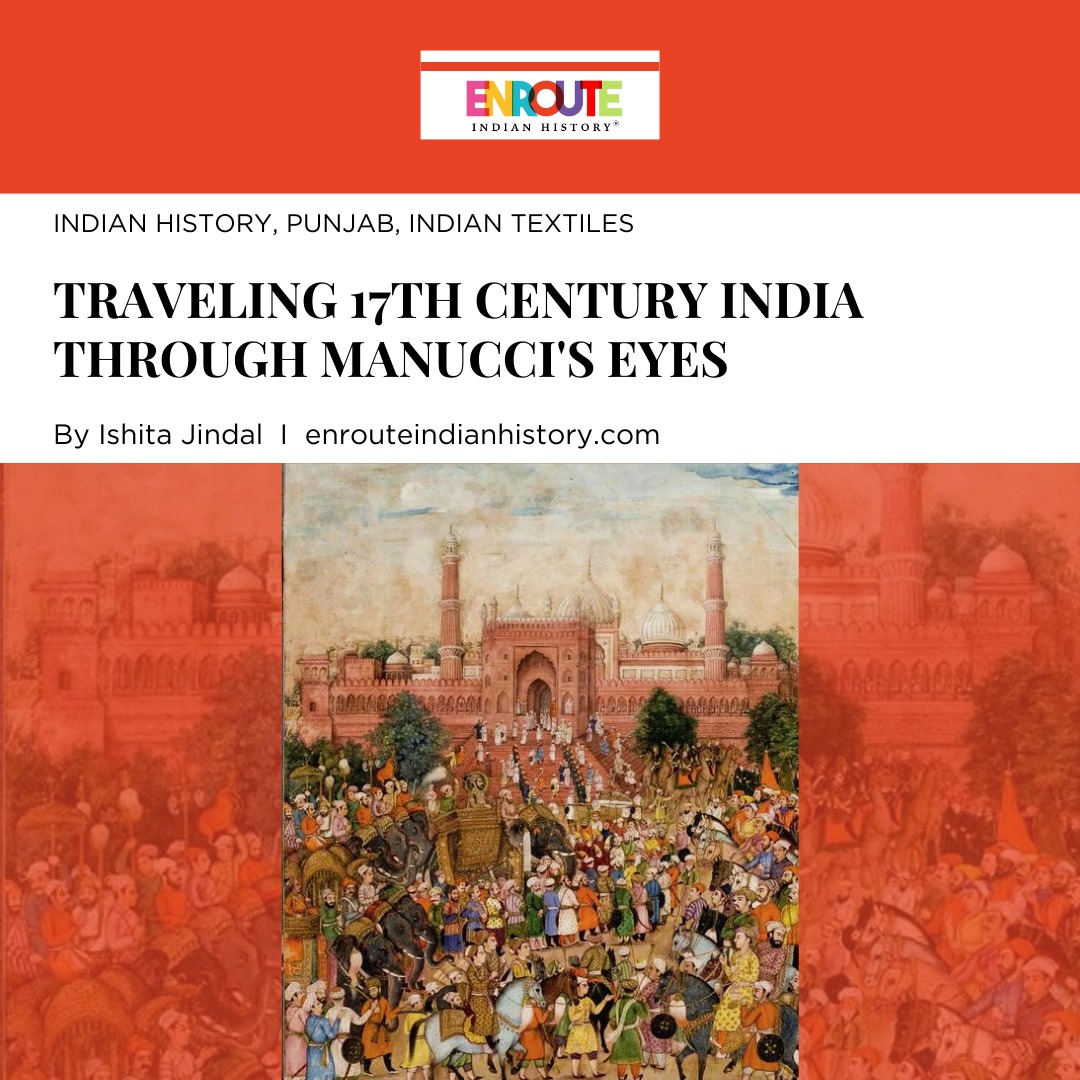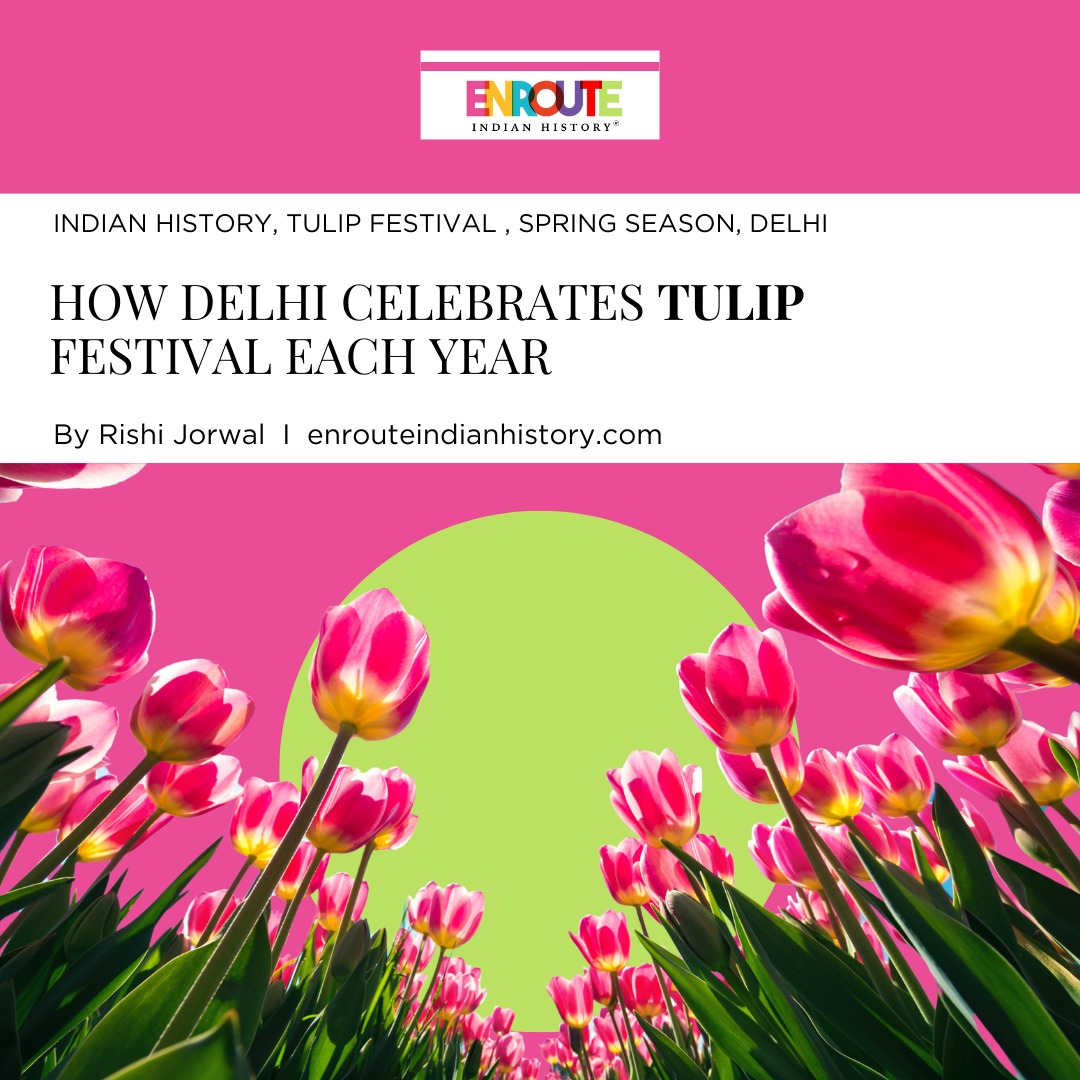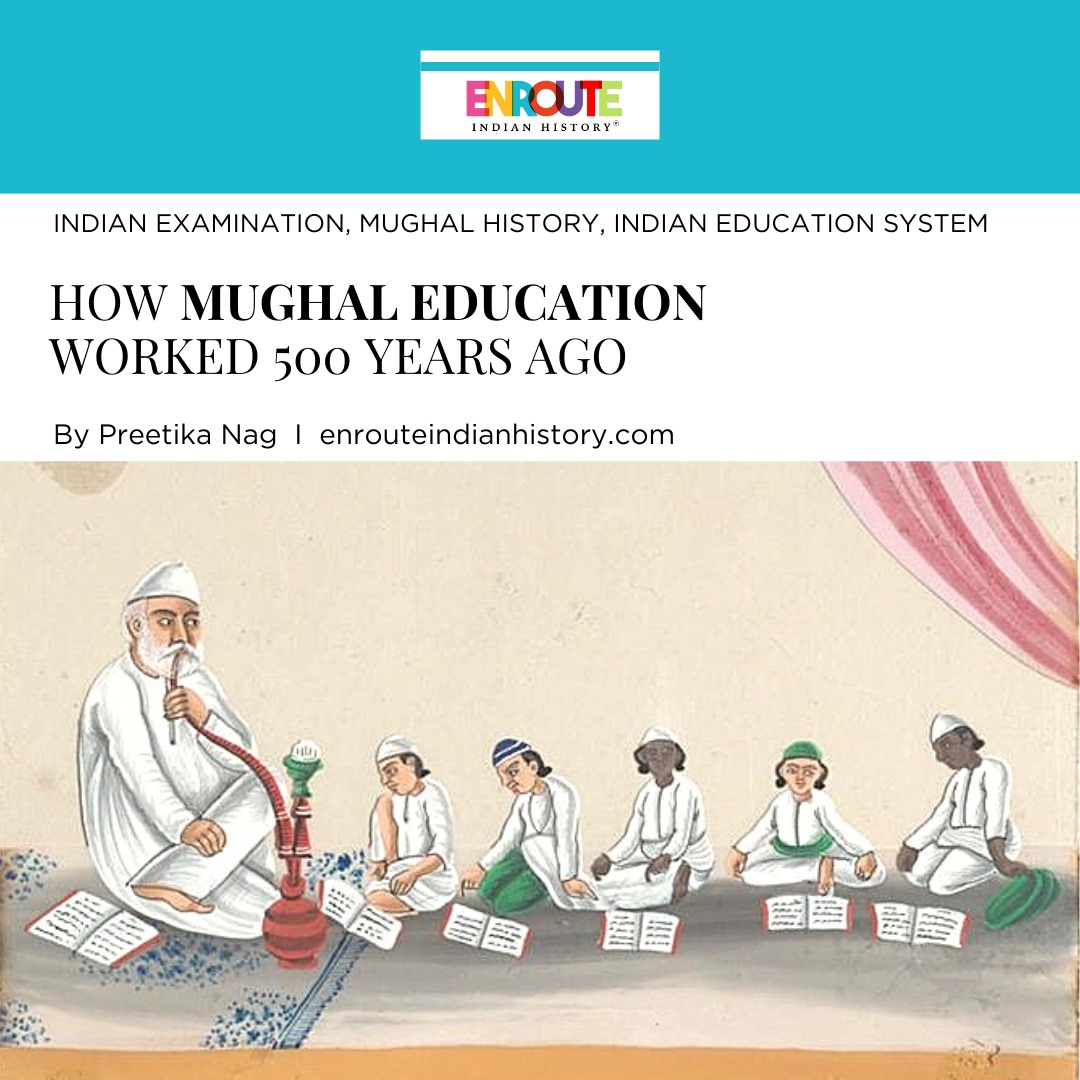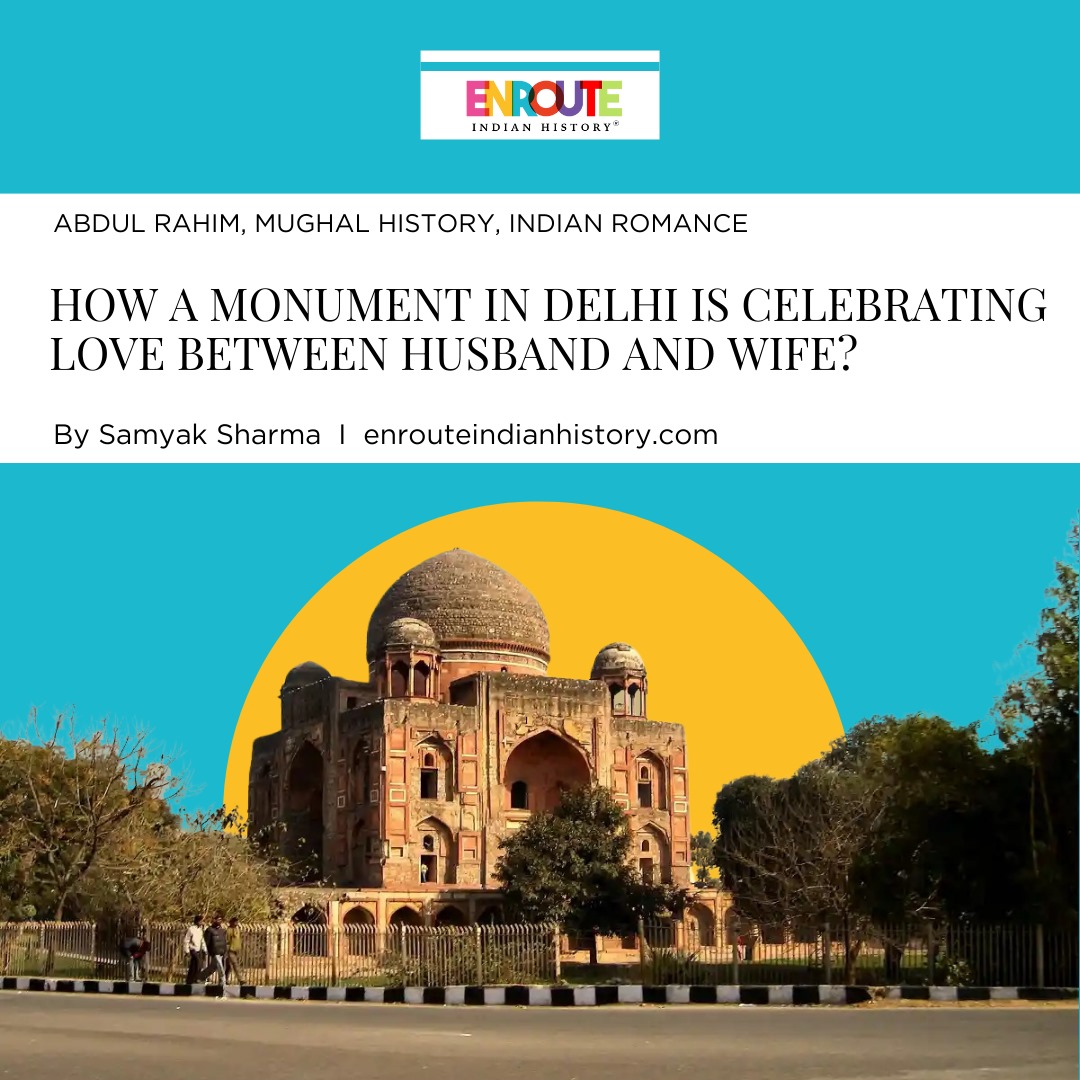Royal Union: Dara Shikoh and Nadira Bano Begum’s Timeless Wedding Tale
- enrouteI
- December 4, 2023

In the vibrant tapestry of modern-day India, weddings have evolved into grand spectacles, weaving together traditions, celebrations, and a kaleidoscope of emotions. From dazzling decor to elaborate ceremonies, these joyous occasions are more than just unions; they are extravagant festivals that mirror the rich cultural mosaic of the subcontinent. As we immerse ourselves in the opulence of contemporary weddings, it becomes intriguing to trace back the footsteps of history, where royal nuptials set the stage for legendary unions. One such timeless chapter unfolds in the life of Dara Shikoh, a momentous figure in Indian history, whose wedding to Nadira Bano Begum was not merely an alliance of two souls but a grand celebration that echoed through the annals of time. Dara Shikoh’s union with Nadira Bano Begum emerges as a jewel in the crown of historical weddings, a tale that resonates with the splendour and romance that characterise India’s rich cultural heritage.
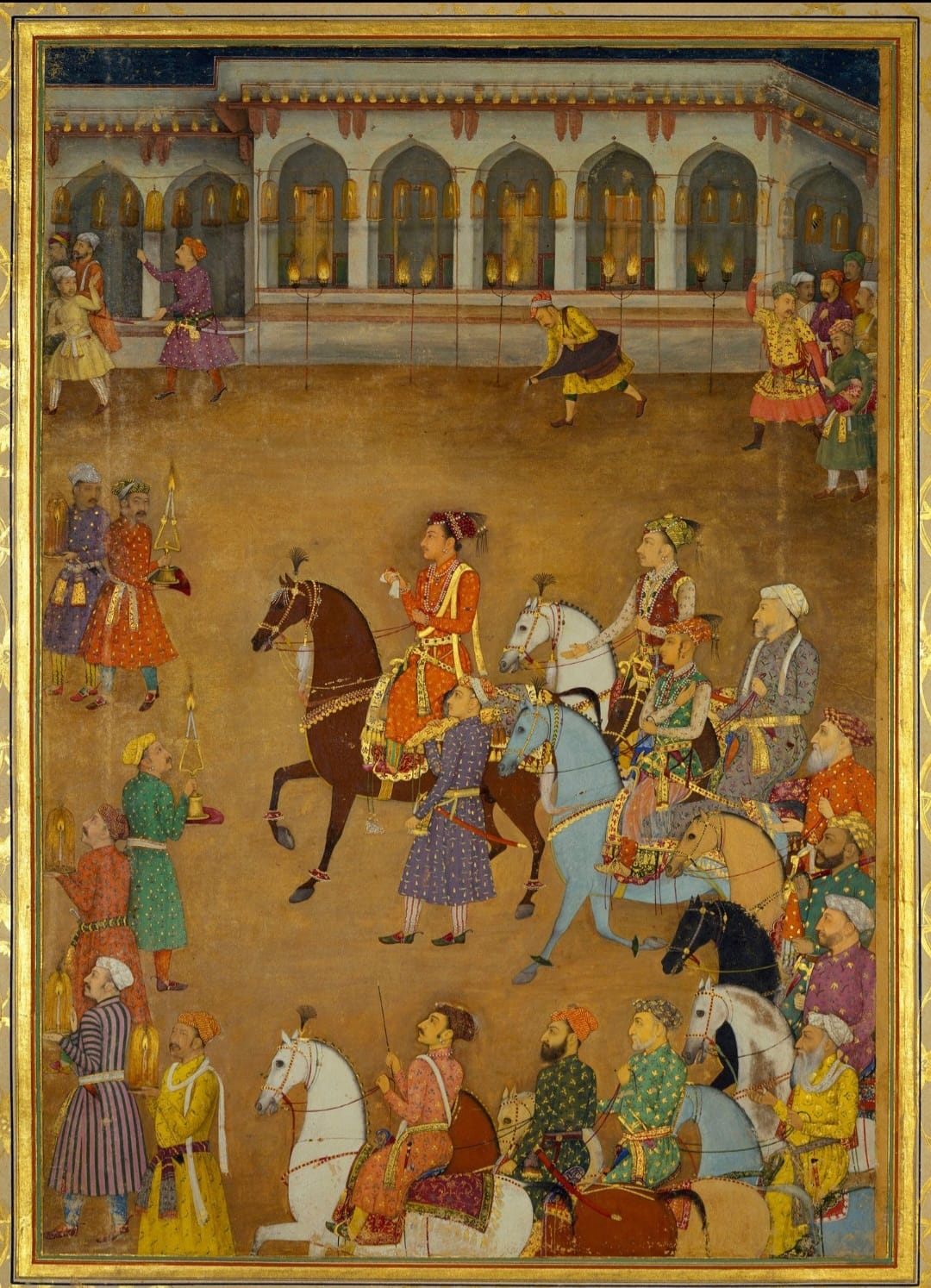
Royal Collection Trust ; The wedding procession of Dara Shikoh by Murar, c. 1635 – 1650.
Prince Dara-Shukoh’s wedding, the eldest son and favoured successor of Shah-Jahan, unfolded with extraordinary grandeur. This extravagant celebration marked the first major event after the Mughal court observed over a year of mourning for Mumtaz Mahal, the Emperor’s wife, and Dara-Shikoh’s mother, who had tragically passed away during childbirth. Instead of being organised by Mumtaz Mahal, who would have traditionally overseen such public ceremonies, the responsibility fell upon Dara-Shukoh’s sister, Jahanara.
The Tragic Brilliance of Dara Shikoh
Dara, is often regarded as an ill – fated prince as he had to experience a series of unfortunate and unfavourable events in his lifetime eventually leading to his death. He distinguished himself not only through the brilliance of his intellect but also through his exemplary courtesy and conduct. As the heir-apparent, the Emperor entrusted him with the significant responsibility of overseeing the entire affairs of the state. This acknowledgment was a testament to his exceptional qualities of both mind and heart, as well as his adeptness in handling sensitive issues confronting the Empire.
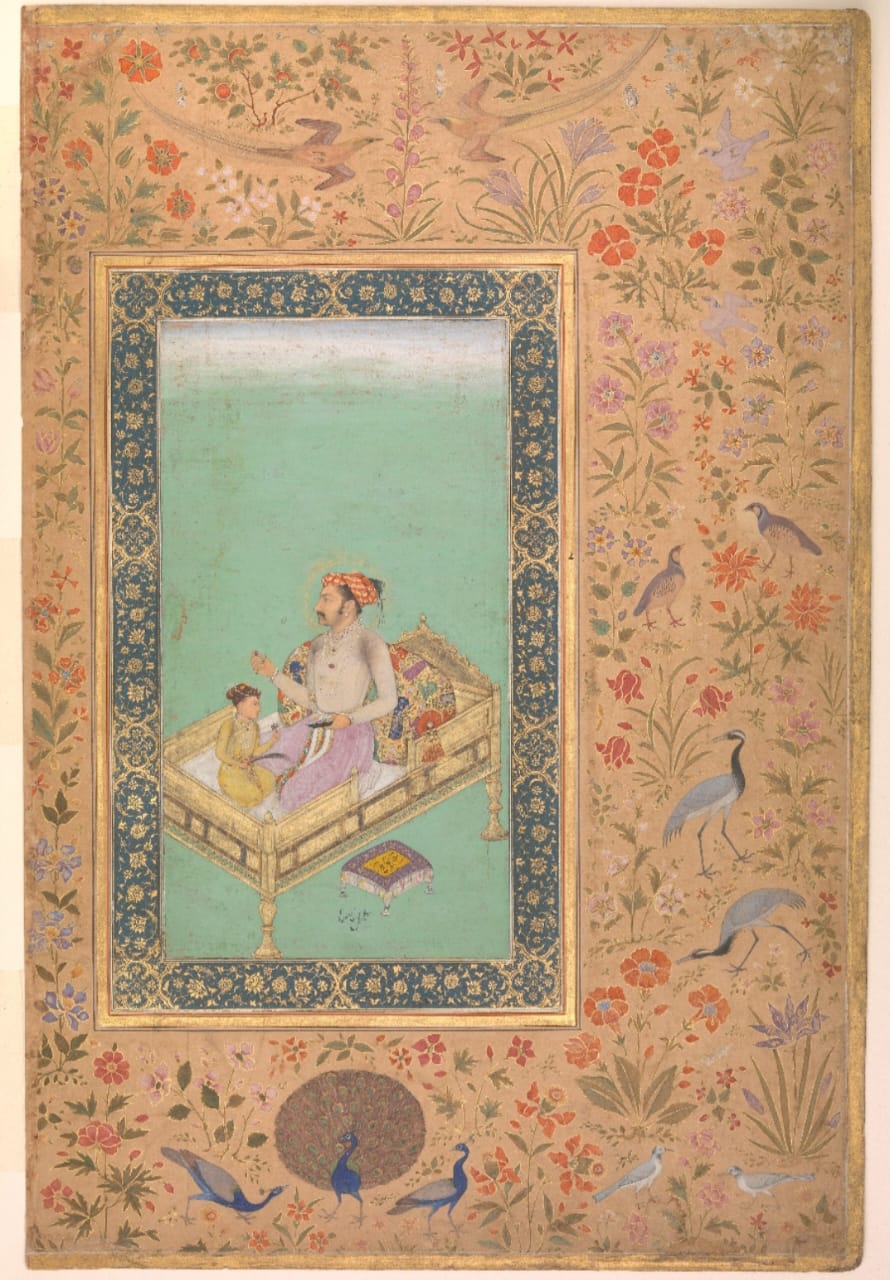
The Metropolitan Museum of Art, New York ; The Emperor Shah Jahan with his son Dara Shikoh, painted by Nanha in c. 1620.
In contrast to other Princes who assumed the role of Governors in various provinces, Dara Shikoh chose to reside in the capital, diligently fulfilling his duties with the assistance of a carefully chosen group of advisors. However, it is a matter of lamentation that a prince so meticulously groomed and endowed with immense talent failed to leave a lasting mark of significance.
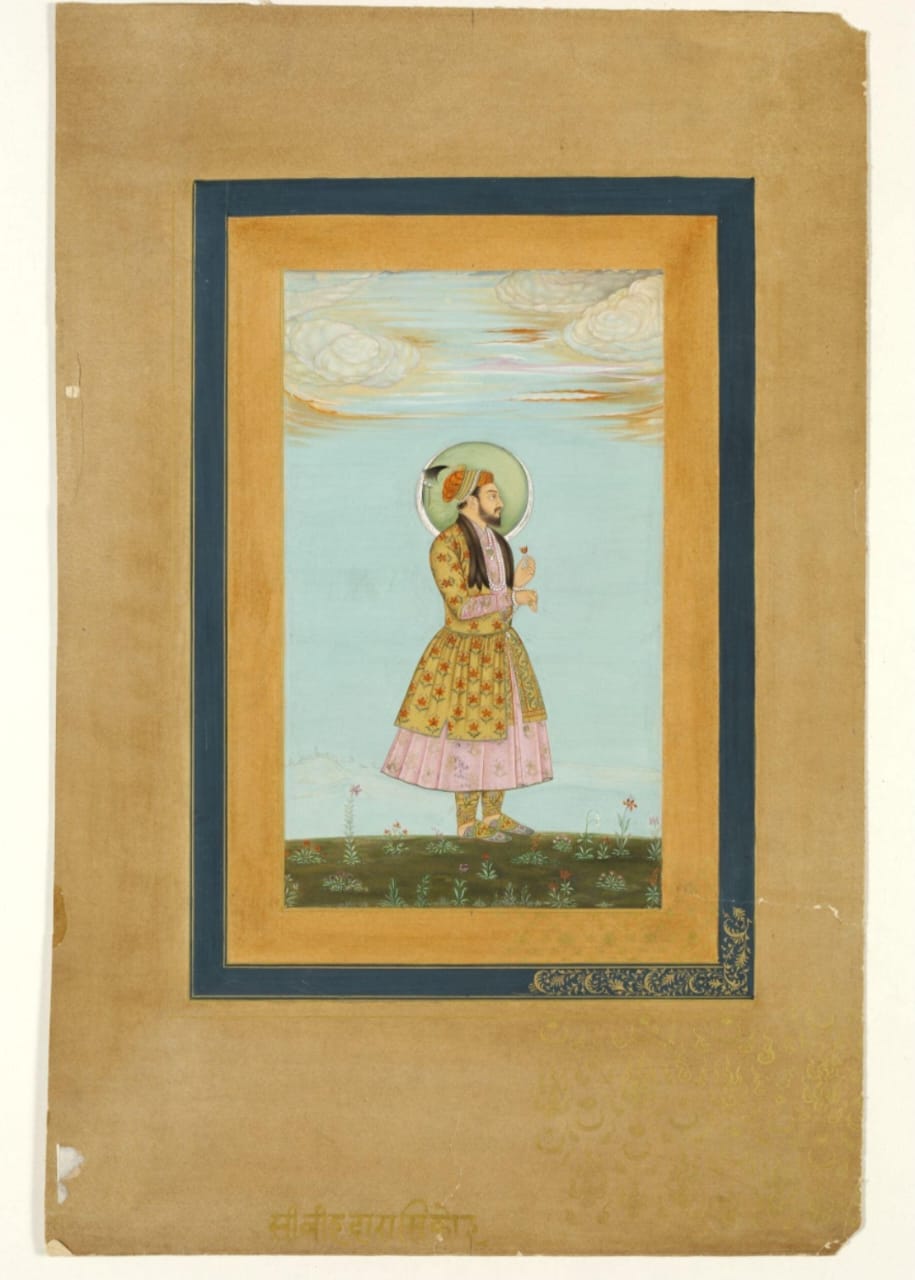
Victoria and Albert Museum, London ; A portrait of Dara Shikoh by Nandalal, ca. 1880.
The lineage of Nadira Banu Begum remains a subject of contention. While some argue that she was Dara Shikoh’s sister rather than his wife, the consensus among most historians is that she was both his second cousin and wife. Her father, Sultan Parvez Mirza, was the second son of Emperor Jahangir, and she was the granddaughter of Murad, Akbar’s younger son.
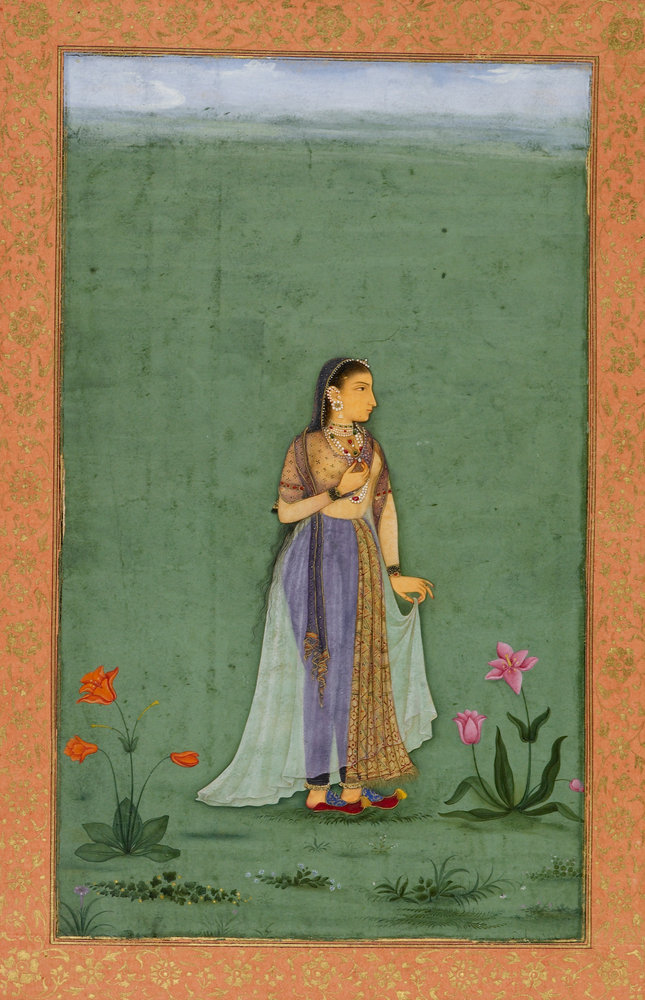
British Library, London ; A portrait of Nadira Bano Begum attributed to Balchand, c.1631-2.
Dara, known for his liberal mindset and fervent support for the arts, undertook the compilation of an album featuring artwork. This collection, a testament to his appreciation for creativity, was ultimately presented as a gift to his wife and ‘most cherished confidante,’ Nadira Banu Begum.

David Museum, Copenhagen. Dara Shikoh embracing his wife, Nadira Bano Begum.
The couple was widely perceived as deeply devoted to each other. The union was notable for its departure from the tradition established since Babur’s time, where heirs of the Emperor typically avoided marrying within the family. This unconventional choice might have been Shah Jahan’s strategic way of fortifying the existing imperial networks. Alternatively, it could be interpreted as a reflection of Dara Shikoh’s elevated status, necessitating a marriage within the family, in contrast to his brothers who opted for spouses from outside the family. Notably, Dara Shikoh boasted the largest household among Shah Jahan’s heirs.
The Wedding Celebration
A departure from tradition, Dara Shikoh’s nuptials, marked by unparalleled magnificence, provide a captivating glimpse into the intricacies of Mughal royalty and the nuanced interplay of love, politics, and culture. Dara Shikoh’s wedding, a grand event woven with threads of tradition and opulence, unfolded through a series of captivating events that marked this significant chapter in Mughal history. The festivities commenced in an atmosphere of regal splendour. The venue, likely the grand palatial quarters, resonated with the sounds of music, the fragrance of floral arrangements, and the brilliance of ornate decorations. It was a setting befitting the stature of the Mughal prince and the significance of the occasion.
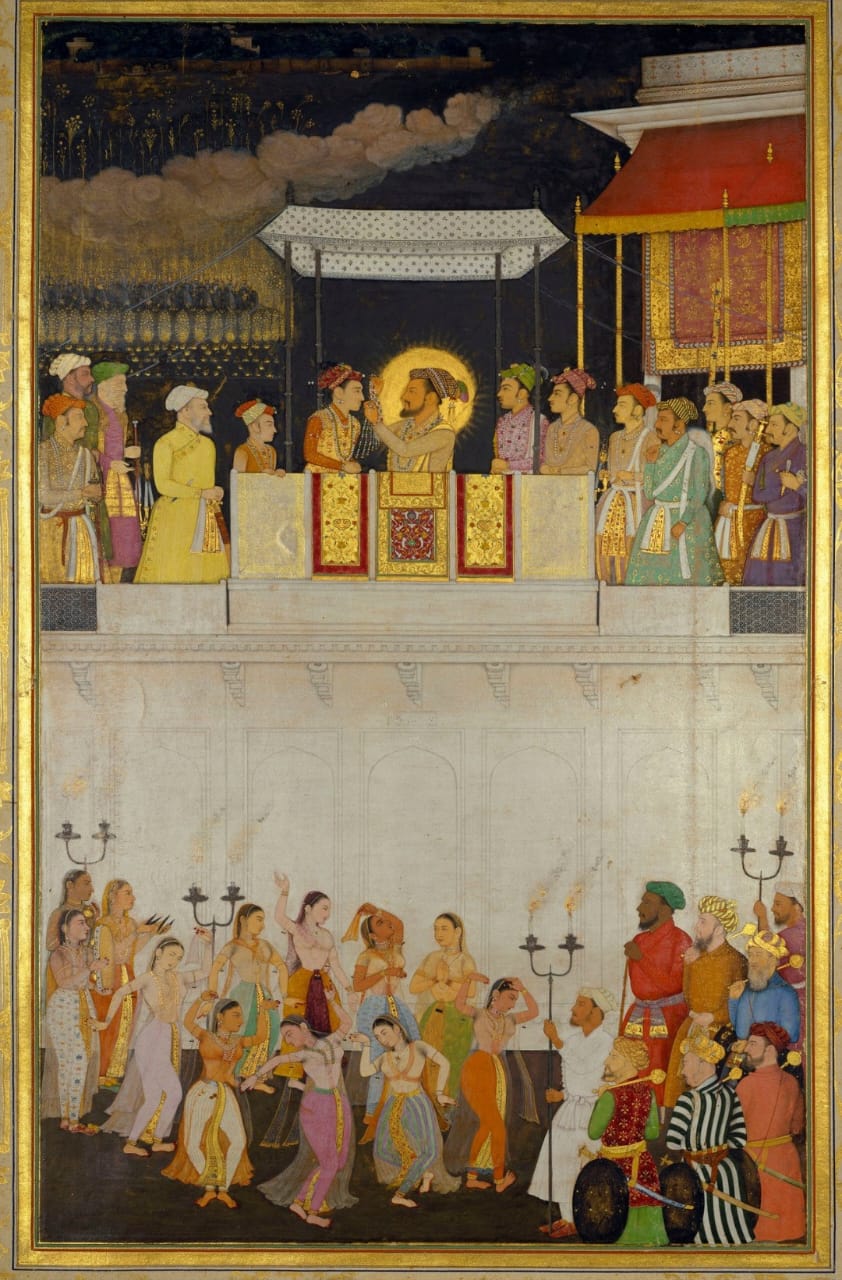
Royal Collection Trust ; Sehra bandi ceremony for Prince Dara Shukoh’s wedding at the Agra Fort on 12 Feb 1633, by Bulaqi.
This painting captures Shah-Jahan, seated beneath a night canopy adorned with silver stars, as he secures the sehra around Prince Dara-Shukoh’s head. The sehra, crafted from strands of pearls embedded with rubies and emeralds, complements the gold robe of honour worn by the prince. The Padshahnama texts recount that this very veil had adorned Shah-Jahan during his own sehra bandi ceremony: “In accordance with the custom of Hindustan, for good luck His Majesty fastened around the Prince’s head the sehra, which consists of strands of lustrous pearls with brilliant rubies and emeralds, and which His Majesty Jannat-Makani [Jahangir] had fastened with his own blessed hand around His Majesty’s [Shah-Jahan’s] head on the eve of his marriage.”

Royal Collection Trust ; The second painting in a pair captures the Sehra bandi ceremony during Prince Dara Shukoh’s wedding at the Agra Fort on February 12, 1633. This particular image focuses on the courtiers, musicians, and singers actively participating in the event.
The henna-bandi ceremony, a significant ritual during the Mughal era, found prominence during the reign of Shah Jahan. In 1633 CE, Shah Jahan’s son, Dara Shikoh, underwent the henna-bandi ceremony, adorning his hands and feet with henna ahead of his wedding ceremony. This ceremonial event took place in the Diwan-I-Khas, where attendees of the court were offered betel leaves (paan), cardamom, and dry fruits as part of the celebratory distribution.
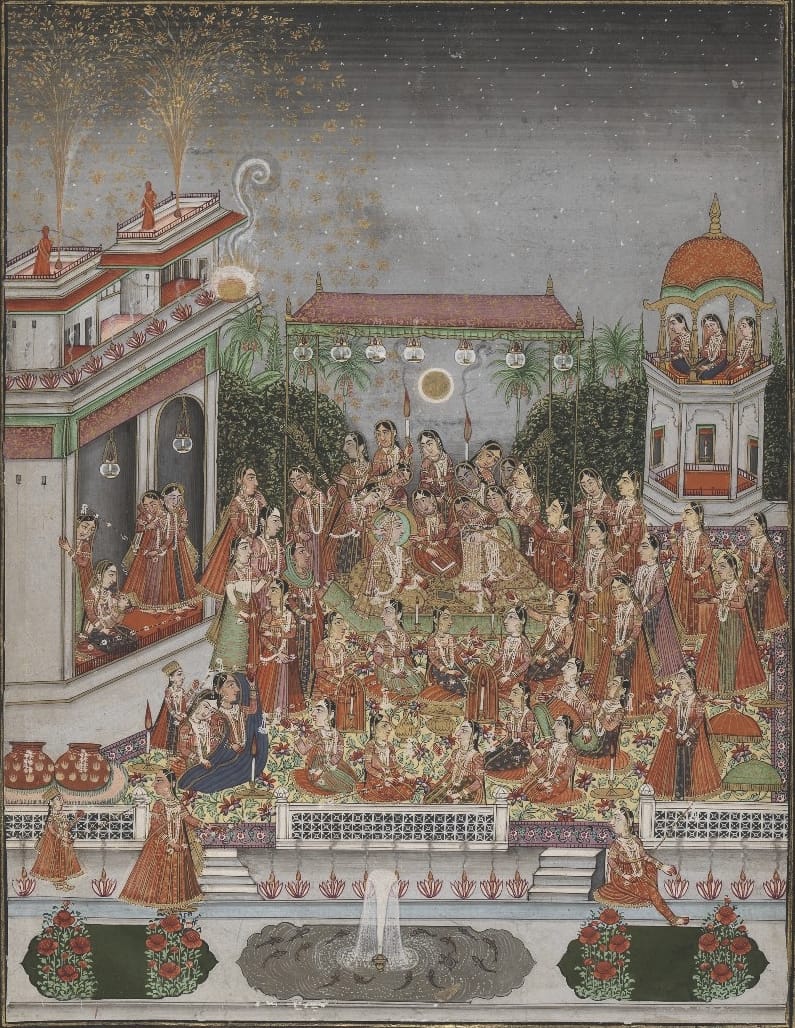
Brooklyn Museum, New York ; The nuptials of Dara Shikoh.
In the imperial household, weddings were extravagant celebrations. Princess Jahanara, Shah Jahan’s daughter, along with Sati un-nisa Khanum, the chief maid of the late empress Mumtaz Mahal, orchestrated the opulent arrangements for this royal wedding.
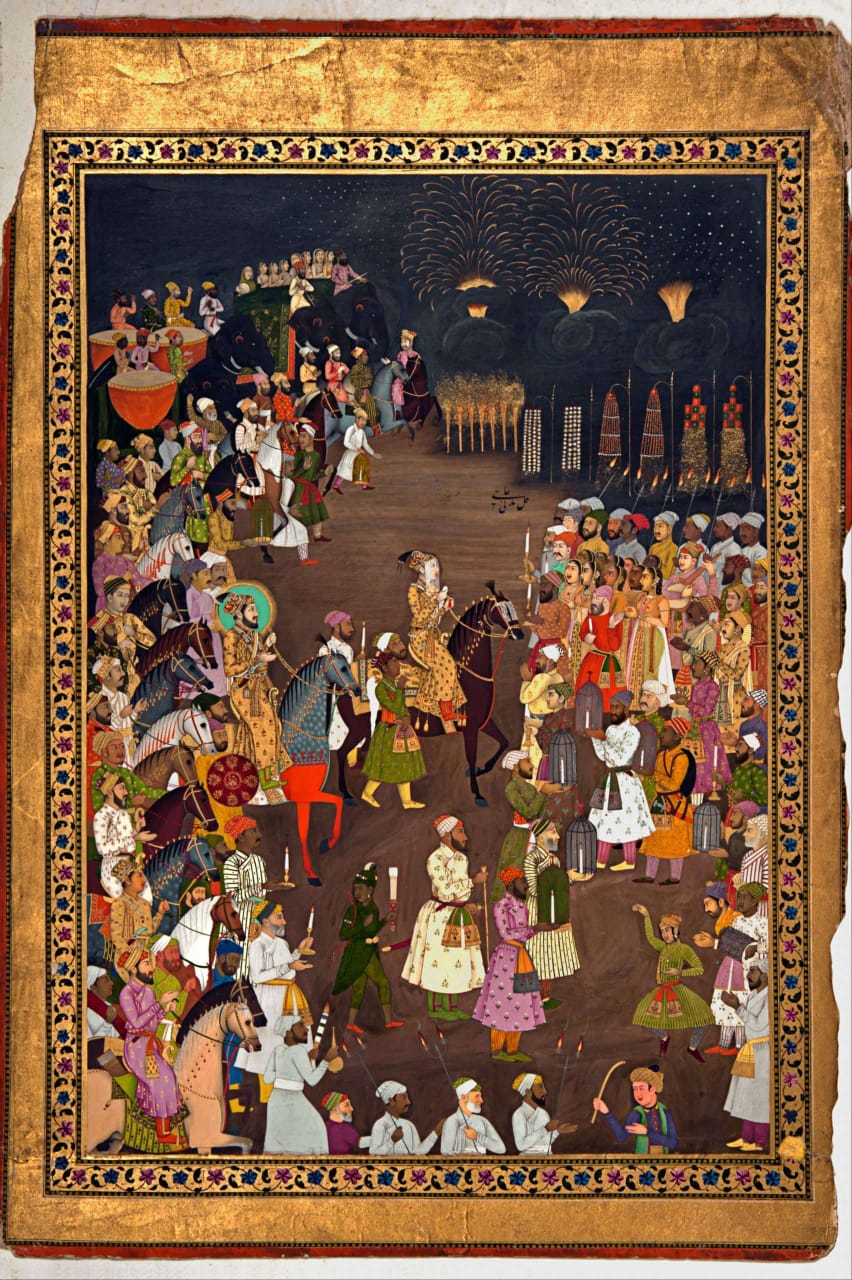
National Museum, New Delhi ; Mughal Emperor Shahjahan in the marriage procession of his eldest son, Dara Shikoh. Created by Haji Madni around 1740 – 1750.
The sumptuous wedding unfolds beautifully on the canvas, capturing Dara Shikoh at the focal point astride a adorned horse. The groom is resplendent in an intricately adorned Kabayi, or tunic, with a Sehra gracefully draping over his head. Balancing a handkerchief in one hand and the reins in the other, the beloved son of Emperor Shah Jahan is accompanied by his father, who rides an extraordinary horse adorned with a golden halo. The scene further portrays the presence of imperial family members, nobles, and elephants as they are warmly welcomed by the bride’s side, marked by the glow of candles and the brilliance of fireworks.
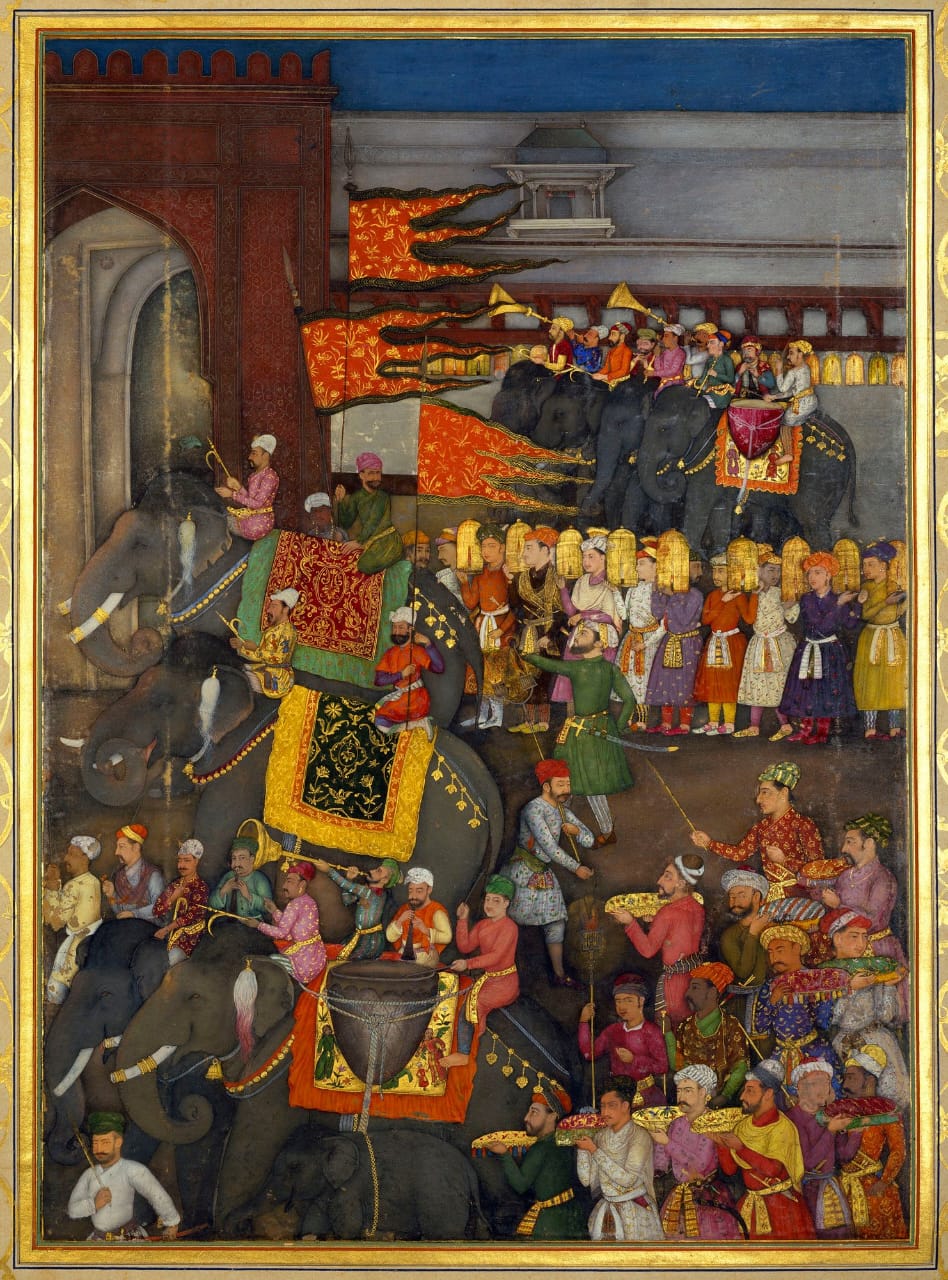
Royal Collection Trust ; Arrival of the royal baraat at Agra Fort.
The wedding incurred a staggering total cost of 32 lakh, with six lakh sourced from the imperial treasury, 16 lakh contributed by Jahanara, and the remaining amount provided by the bride’s mother. The Shah Jahan Nama provides an elaborate breakdown of the wedding expenses: the bride’s trousseau, amounting to Rs. 800,000, stood as the most substantial ever recorded; expenditures on jewellery, precious gems, and intricate pieces totaled Rs. 750,000; and a substantial sum of Rs. 1,800,000 was dedicated solely to the initial rites and rituals. Certain preparations for this momentous occasion were overseen by Shah Bano Mumtaz Mahal Begum during her lifetime, while the remaining responsibilities were shouldered by Princess Jahanara Begum. As the head of all affairs in the Heramserai (the royal household), Princess Jahanara funded these expenses from her personal resources. Shah Jahan’s presentation incurred a cost of Rs 150,000, encompassing a gold elephant Imari (rider’s seat) and Chitr (umbrella) adorned with strings of pearls. An allocation of Rs 10,000 was designated for showering, possibly on dancers and musicians. The presentation further included exquisite dresses, fine silver vessels, and rare gifts from various countries, valued at Rs 640,000. Additionally, Rs 100,000 in cash was provided. The royal elephant received silver reins and bridle, along with a brocade and velvet covering. Horses from Arab, Iraq, Turkmenistan, featuring gold and silver saddles, and some swift mares, carriages, etc., were also part of the presentation. The ladies of the Harem Serai and other noble women were gifted bags containing expensive cloth, with many bags also holding jewel-studded articles.
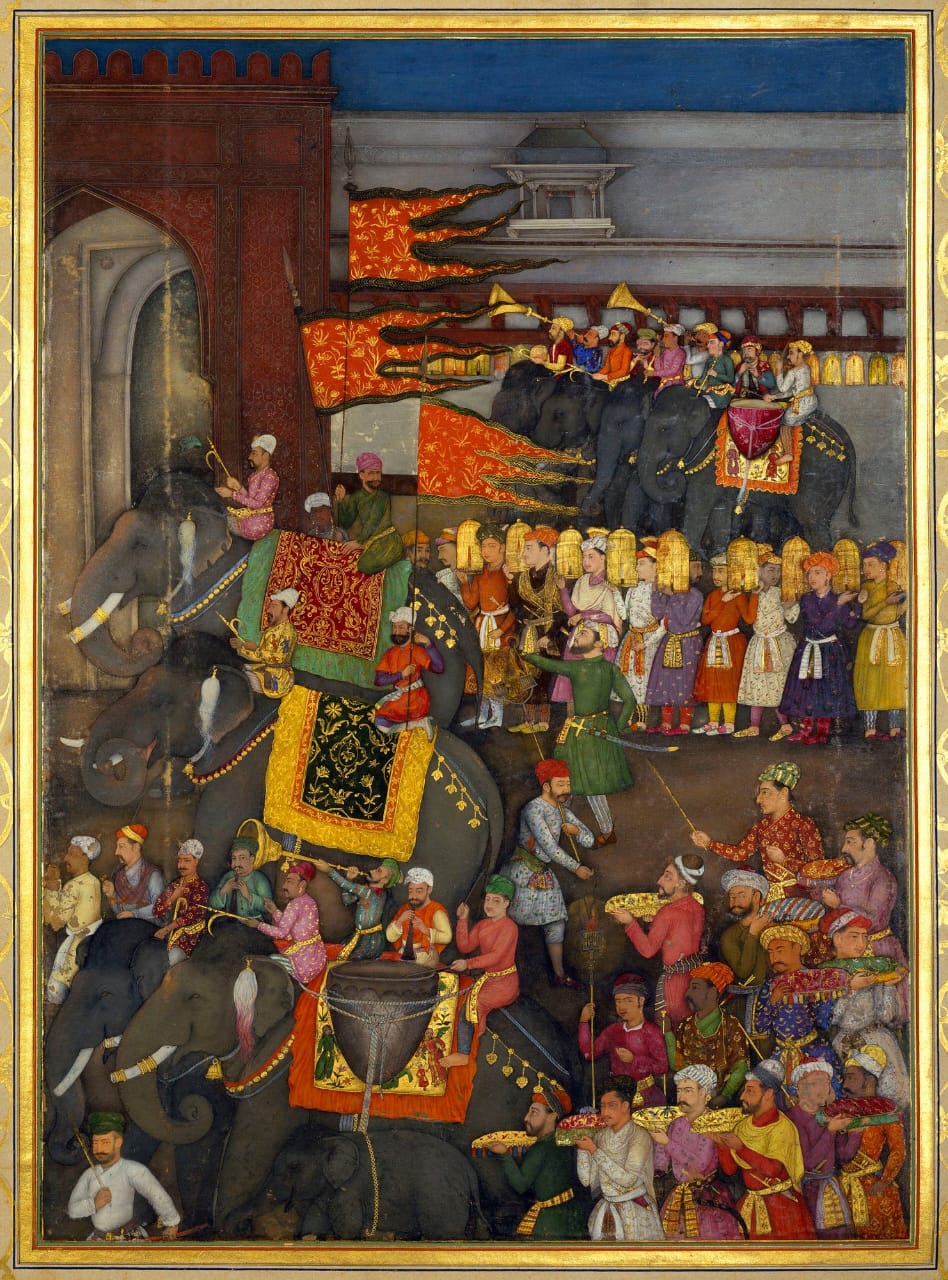
Royal Collection Trust ; A calligraphy by Mir Ali on Dara Shikoh’s wedding procession.
An exhibition of wedding gifts was arranged in the Diwan – I – Aam. In the afternoon the emperor and the royal ladies of the court paid a visit to this exhibition. And later in the evening nobles paid a visit to it.
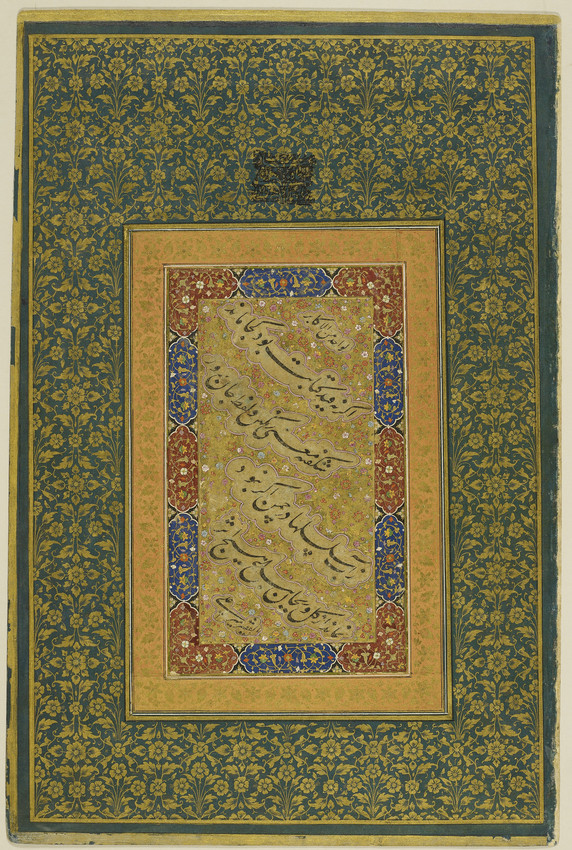
Royal Collection Trust ; Illustration depicting a procession delivering the sachiq (presents sent from the bridegroom’s family to the bride) in anticipation of Mughal Prince Dara-Shukoh’s marriage to Nadira Banu Begum.
The bride’s mother similarly arranged her presents in the same hall and emperor Shah Jahan went to see them.
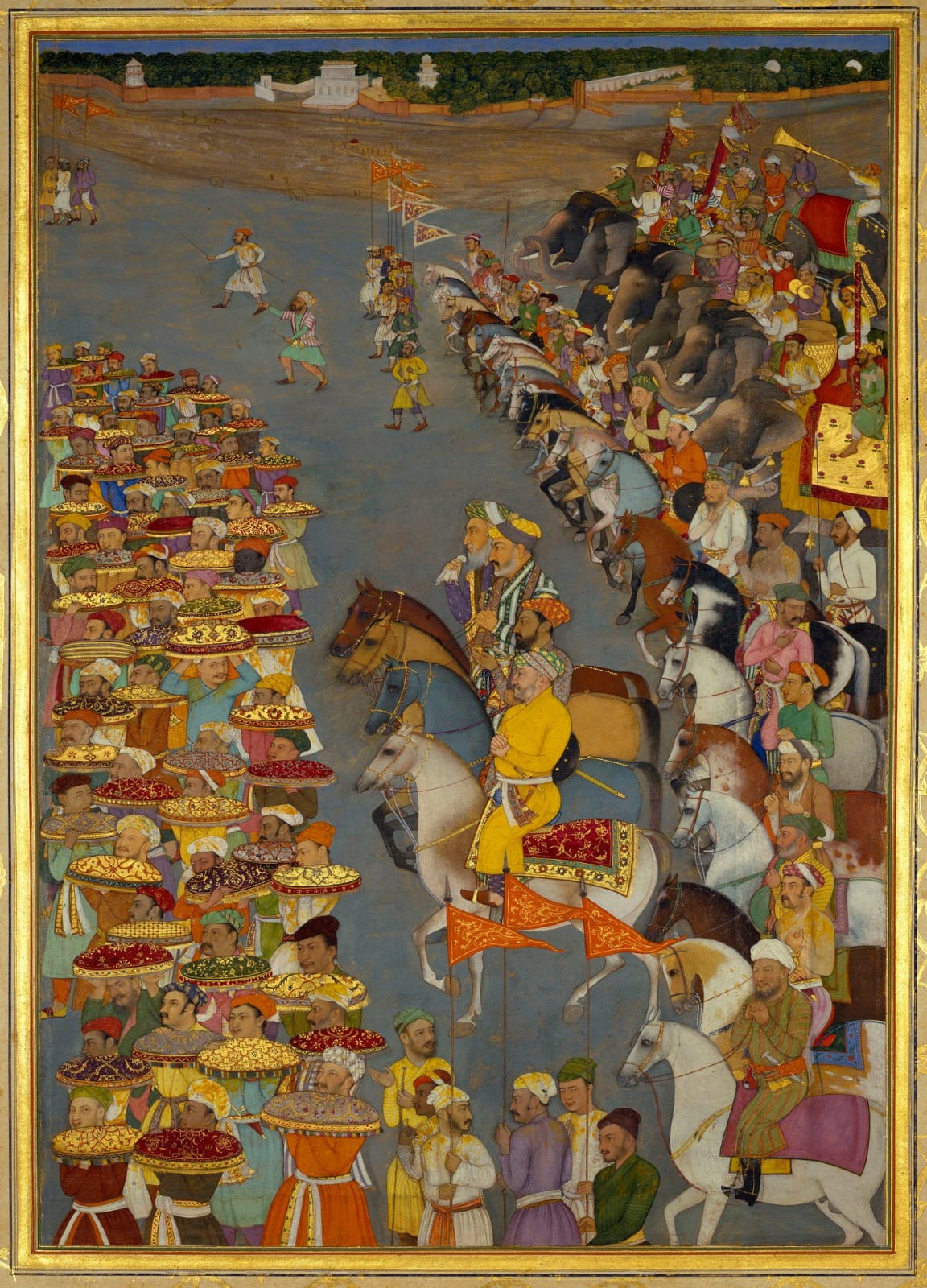
Royal Collection Trust ; Another half of a double-page illustration from Padshahnama depicting a procession delivering the sachiq
In conclusion, the grandeur and extravagance surrounding Dara Shikoh’s wedding stand as a captivating chapter in the annals of Mughal history. The meticulous orchestration of the ceremonies, the opulence of the celebrations, and the symbolic rituals underscore the significance of this union in the imperial household. From the intricate details of the henna-bandi ceremony to the lavish presentations and the staggering financial investments, the wedding of Dara Shikoh reflects not only the splendour of Mughal royalty but also the intricate interplay of familial bonds, cultural traditions, and the political strategies embedded in these elaborate affairs.
References
- Premchand, and Ather Farouqui. “Durbar of Dara Shikoh.” Indian Literature 58, no. 6 (284) (2014): 173–82. http://www.jstor.org/stable/44479206.
- Lambert-Hurley, Siobhan, Daniel Majchrowicz, and Sunil Sharma, eds. “PRINCESS JAHANARA: Mystical Meetings in Kashmir.” In Three Centuries of Travel Writing by Muslim Women, 385–93. Indiana University Press, 2022. https://doi.org/10.2307/j.ctv2nwq9jx.43.
- “In Paintings: The Wedding of Dara Shikoh and Nadira Banu Begum.” 2021. The Heritage Lab. https://www.theheritagelab.in/wedding-dara-shikoh-painting/.
- Qanungo, Kalika Ranjan. Dara Shukoh. Kolkata: S. C. Sarkar, 1952.
- February 16, 2024
- 9 Min Read


